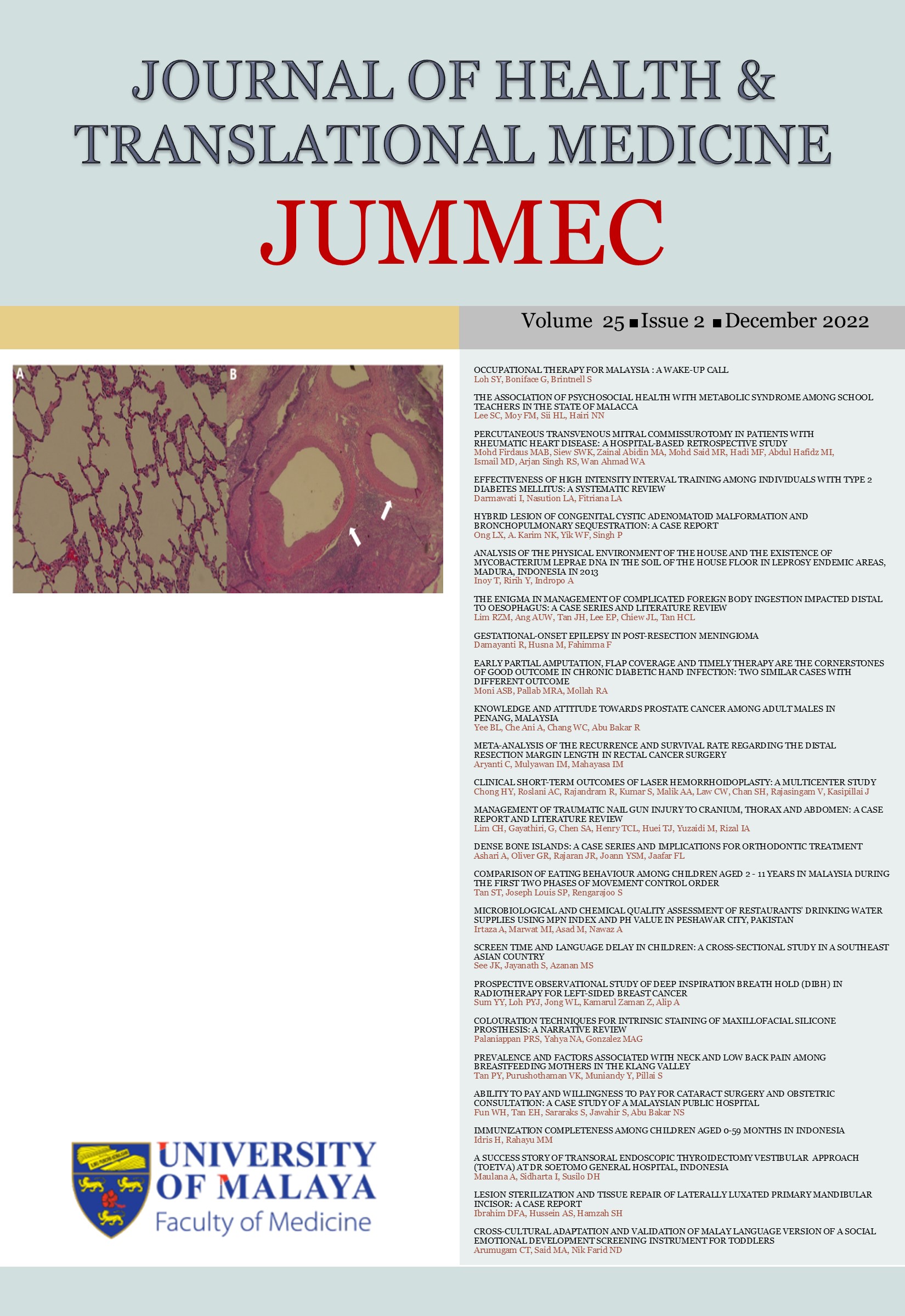PERCUTANEOUS TRANSVENOUS MITRAL COMMISSUROTOMY IN PATIENTS WITH RHEUMATIC HEART DISEASE: A HOSPITAL-BASED RETROSPECTIVE STUDY
Received 2021-05-29; Accepted 2021-11-25; Published 2022-07-01
DOI:
https://doi.org/10.22452/jummec.vol25no2.3Keywords:
Mitral stenosis, Mitral valve, Percutaneous Transvenous Mitral Commissurotomy, PTMC, Interventional cardiologyAbstract
Background: Percutaneous Transvenous Mitral Commissurotomy (PTMC) is a procedure of choice for the treatment of severe mitral stenosis. We aimed to describe our experiences on management of rheumatic heart disease with PTMC in Malaysia.
Methods: Patients who underwent PTMC were traced through the electronic medical record of University Malaya Medical Centre. The patients detailed echocardiogram parameter pre-procedure, post-procedure and outcome were documented. Statistical analysis was performed using SPSS version on 18 for windows.
Results: 11 patients were treated with PTMC in our centre with 90.9% (n=10) success rate. Subjects underwent PTMC were statistically significant associated with improved echocardiogram parameters as following: increase in mitral valve size (p=0.0058) from 0.89 ± 0.2 cm2 (pre) to 1.4 ± 0.4 cm2 (post); reduction in mean pressure gradient across mitral valve (p=0.0283) from 11.5 ± 4.9 mmHg (pre) to 6.9 ± 3.5 mmHg (post); and reduction (p=0.0019) in elevated pulmonary artery systolic pressure from 65.7 ± 21.4 mmHg (pre) to 45.6 ± 10.0 mmHg (post). More than half (62.5%, n=5) of the subjects with favourable Wilkin score 8 or less achieved good outcome defined as post-PTMC mitral valve size ≥ 1.5 cm2 . All subjects with unfavourable Wilkin score of more than 8 only achieved sub-optimal post-PTMC mitral valve size ≤ 1.5 cm2 .
Conclusion: Given the minimally invasive nature of PTMC with comparable excellent haemodynamic outcome to invasive vascular repair, PTMC should be the recommended first line therapy in mitral valve stenosis.
Downloads
Downloads
Published
Issue
Section
License
All authors agree that the article, if editorially accepted for publication, shall be licensed under the Creative Commons Attribution License 4.0 to allow others to freely access, copy and use research provided the author is correctly attributed, unless otherwise stated. All articles are available online without charge or other barriers to access. However, anyone wishing to reproduce large quantities of an article (250+) should inform the publisher. Any opinion expressed in the articles are those of the authors and do not reflect that of the University of Malaya, 50603 Kuala Lumpur, Malaysia.


